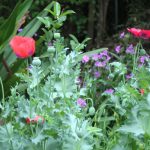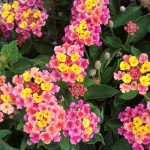It’s an exciting time for natural areas here in San Antonio with San Antonians protecting, preserving, restoring and enjoying natural areas across the city.
From the major restoration of the Mission Reach section of the San Antonio River and the 120-mile stretch of hike and bike trails of the Howard Peak Greenway Trail to Hardberger Park, Friedrich Wilderness Park, Mitchell Lake Audubon Center and Government Canyon — all these natural areas, and many more, are now entwined into our neighborhoods.
What many people may not realize is they can have a direct (positive or negative) impact on these natural areas by starting right in their own backyard. Even if you don’t live adjacent to a natural area or greenway trail, the plants you choose for your own yard can have an impact on these areas.
Over the last few months, I’ve visited with local natural area managers from the San Antonio River Authority, City of San Antonio Natural Areas, and Texas Parks and Wildlife, asking them which non-native plants are the most problematic for their areas requiring time and resources to control or remove them.
More specifically, I asked about plants that have encroached into their natural areas that can be purchased and are often planted in area landscapes. This is an important distinction, as there are many other problematic plants that don’t have a “backyard” connection.
Dubbed the Dirty Dozen, many of these plants will be familiar to you — and some may even surprise you to learn they’re problematic.
One plant on the list that surprised me is Lantana camara, from which many beautiful lantana cultivars found in landscape nurseries are derived. I thought the classic multi-colored pink and yellow bush was native because it came up on its own and is so tough. Alas, it is not our Texas native Lantana horrida.
And in the spirit of “nature always finds a way,” a second popular cultivar, purple trailing lantana, purported to be seedless, seems to have found a way to escape on its own into our natural areas. And it has been a particularly good year for this lantana.
In the past, I’ve had no fewer than seven of the plants from the list in my own 1920s era San Antonio neighborhood. While I still have three of them (four if you count the bamboo I’m constantly beating back), I am working on keeping them under control. And more importantly, I will choose not to add any more of the Dirty Dozen in the future.




